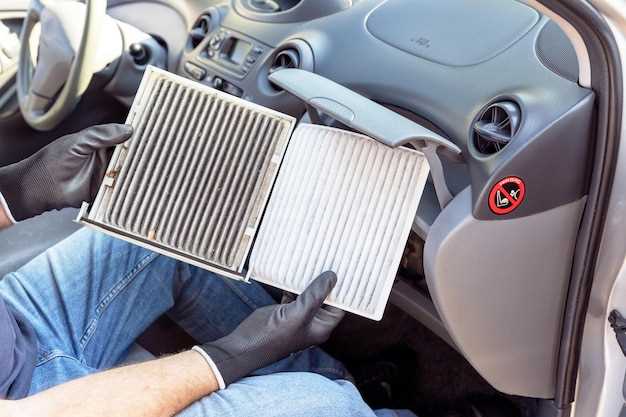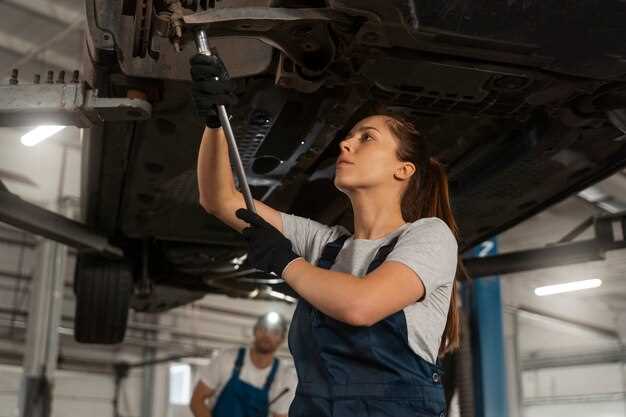Common HVAC Problems in Vehicles

The heating, ventilation, and air conditioning (HVAC) system in vehicles plays a crucial role in maintaining comfort during drives, regardless of the weather conditions outside. A well-functioning HVAC system ensures that passengers are kept warm during cold months and cool during hot summers. However, like any complex system, vehicle HVAC systems can encounter a variety of issues that hinder their performance.
Common problems observed in vehicle HVAC systems include inadequate heating, strange noises, and fluctuating temperature control. These issues not only affect driving comfort but can also indicate underlying mechanical problems that may require immediate attention. Thus, understanding the common HVAC issues and their possible solutions is essential for every vehicle owner.
In this article, we will explore the common HVAC problems encountered in vehicles, the underlying causes behind these issues, and practical solutions to resolve them. By identifying and addressing these concerns early, drivers can enhance the longevity and efficiency of their heating systems, ensuring a more comfortable driving experience.
Identifying and Resolving Inconsistent Heating Performance

Inconsistent heating performance in your vehicle’s HVAC system can lead to discomfort and frustration, especially during colder months. To address this issue effectively, it is important to identify the underlying causes and implement appropriate solutions.
One common reason for inconsistent heating is a malfunctioning thermostat. If the thermostat is not accurately reading the cabin temperature, the HVAC system may not heat the air properly. To resolve this, check the thermostat settings and consider recalibrating or replacing it if necessary.
Another potential issue can be a clogged or dirty cabin air filter. A blocked filter restricts airflow, preventing the HVAC system from delivering warm air effectively. Regularly replace or clean the cabin air filter to ensure optimal airflow and performance.
Insufficient coolant levels can also contribute to uneven heating. The HVAC system relies on engine heat to warm the air circulated in the cabin. Check the coolant levels and refill or address any leaks to maintain proper heating functionality.
In some cases, the problem may lie within the heater core. If the core is blocked or malfunctioning, it can cause hot air to be improperly distributed throughout the vehicle. Flushing the heater core or replacing it can restore consistent heating.
Additionally, ensure that the HVAC system’s blower motor is functioning correctly. A failing blower motor may inadequately push warm air into the cabin, leading to inconsistent temperatures. Testing the motor and replacing it if needed will enhance heating performance.
Lastly, check for any air leaks in the ductwork. Gaps or holes can cause warm air to escape before reaching the cabin. Sealing these leaks will help maintain a steady flow of warm air and improve overall heating efficiency.
By systematically addressing these common issues, you can resolve inconsistent heating performance and ensure a comfortable ride in any weather condition.
Tackling Unpleasant Odors from the HVAC System

Unpleasant odors emanating from the HVAC system can be both bothersome and indicative of underlying issues. Identifying the source of these odors is crucial for both comfort and health. Commonly, smells can arise due to mold growth, dirty filters, or malfunctioning components.
Mold and mildew often thrive in damp environments, leading to musty smells within the HVAC system. To combat this, regular inspection and cleaning of the evaporator coil, ducts, and drain line are essential. Additionally, ensuring that the condensate drain is unclogged will help prevent moisture buildup.
Dirty or clogged filters can also contribute to foul odors. Filters trap dust, allergens, and debris, which can create a breeding ground for bacteria. Replace or clean filters regularly, ideally every one to three months, to maintain both air quality and system efficiency.
Another potential source of odors is a refrigerant leak, which may emit a chemical smell. If you suspect a leak, it’s crucial to have it assessed and repaired by a qualified technician. Ignoring this issue can lead to more serious mechanical failures and health risks.
In cases where animals or debris have entered the system, the resulting smell can be unpleasant. Inspecting the outside unit and ductwork for blockages or animal infestations can help eliminate these odors. Regular maintenance checks can prevent such occurrences.
Using deodorizing agents specifically designed for HVAC systems can also help neutralize unpleasant smells. Be sure to choose products that are compatible with your system to avoid any damage.
Addressing unpleasant odors from the HVAC system involves regular maintenance, timely inspections, and appropriate use of cleaning agents. By tackling these issues head-on, you can ensure a more pleasant driving experience and healthier air quality.
Repairing Common Refrigerant Leaks in Automotive HVAC
Refrigerant leaks are one of the most prevalent issues in automotive HVAC systems, directly affecting the efficiency of heating and cooling functions. Identifying and repairing these leaks is crucial for restoring optimal performance. Common sources of refrigerant leaks include rubber hoses, connections, and the compressor itself.
To diagnose a refrigerant leak, start by visually inspecting all components for oily residues, which indicate escaping refrigerant. Additionally, using a leak detection dye or an electronic leak detector can help pinpoint the exact location of the leak. Once identified, the first step in repairing is to replace any damaged hoses or seals. Ensure all connections are tightened to prevent future leaks.
If the leak originates from the compressor, it may require a more thorough approach. In some cases, the compressor can be rebuilt; in others, replacement might be necessary. After addressing the leak, it is essential to vacuum the HVAC system to remove any air and moisture before recharging it with the correct amount of refrigerant. This step ensures that the system operates at its best capacity.
Finally, regularly checking and maintaining the HVAC system can prevent refrigerant leaks from occurring. By being proactive with inspections and servicing, vehicle owners can enjoy efficient heating and cooling without the disruptions caused by leaks.

